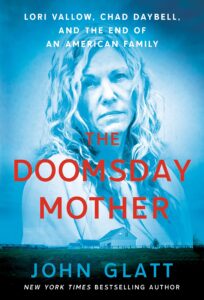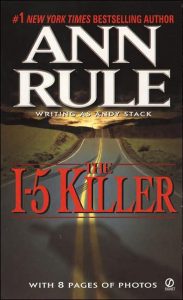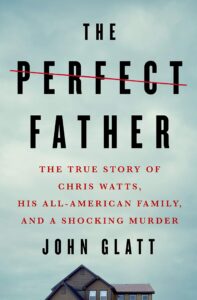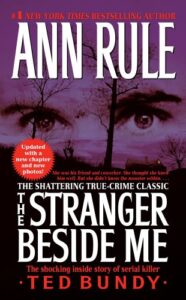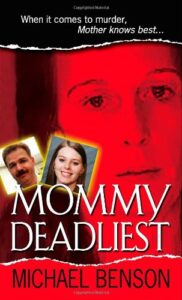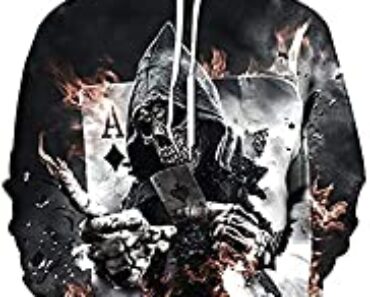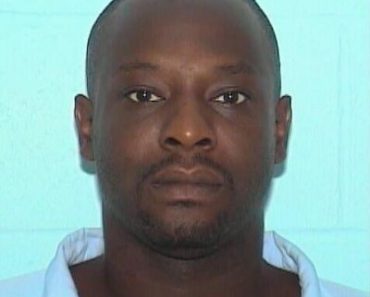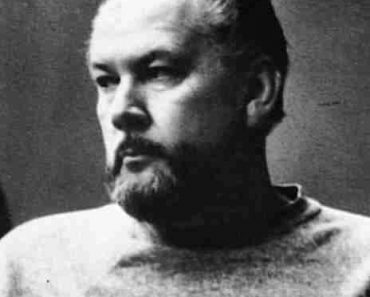Thomas Dillon | Serial Sniper
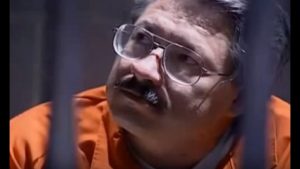
Thomas Dillon
Born: 07-09-1950
Ohio Serial Killer
Ohio Serial Sniper
Crime Spree: 1989 – 1992
Death: 10-21-2011
Thomas Lee Dillon, was born 9 July 1950, in Canton, Ohio. Dillon is a serial sniper who shot and killed five people at random in southeastern Ohio, beginning on April 1, 1989 and continuing until April of 1992.
Southern Ohio’s rural counties, with their rocky and wide-open spaces, are perfect for outdoor recreation. Coal miners, factory workers and farmers make up most of the population and many take advantage of the streams and forests during hunting and fishing seasons. These counties were at one time a place where residents would leave their doors unlocked at night and violent crime was considered a problem of big cities. But all that began to change in the spring of 1989.
On November 10, 1990, 21-year-old Jamie Paxton, a steelworker, awoke just before dawn. It was a frosty Saturday morning, but Jamie had plans outdoors. Ohio’s annual bow hunting season was in full swing and he was not going to miss the opportunity to bag a deer.
Jamie lived with his parents in a cozy white frame house in Bannock County, Ohio. Following breakfast, just before seven o’clock, the young man headed out the door with his crossbow.
Jamie’s mother, 49-year-old Jean Paxton, had expected her son home by mid-afternoon. When he failed to show, she assumed he had a successful hunt and would pull up the drive any minute with a buck in his trunk.
At 2:40 p.m., as Jean went about her household chores, she looked out the window and saw a sheriff’s car pull up. She dashed onto the porch where her husband Mickey was clutching a post for support.
The First Murder
Jamie Paxton was dead. He had been found by friends on a hillside along Route 9, dead from apparent rifle-bullet wounds to his chest, right knee and buttocks.
The killing of Jamie Paxton horrified the quiet community. Hunting accidents were not uncommon to southern Ohio, but Sheriff Tom McCort knew that this was no accident.
Investigators were bewildered by the senseless killing and after interviewing and polygraphing friends, family members and acquaintances, they were even more baffled.
“Everyone in the area knew Jamie Paxton. No one that we knew of had ever disliked the young man.”
Writing Jamie Paxton’s Killer
Jean Paxton decided that mourning Jamie was not enough. She wanted to know who had killed him and why. Jean Paxton used the only method at her disposal to try and get the answers she and her husband so desperately sought.
A short time after Jamie’s murder, Jean began a letter-writing campaign, sending letters to the killer via the Martin’s Ferry Times Leader newspaper:
“To the murderer(s) of my son, Jamie. Would it be easier for you if I wrote words of hate? I can’t because I don’t feel hate. I feel deep sorrow at losing my son. You took a light from my life November 10 and left me with many days of darkness. Have you thought of your own death? Unless you confess your sin and ask for God’s forgiveness, you will face the fire and fury of hell. When you are caught, I will be sorry for your family. They will have to carry the burden of your guilt all their lives.”
Investigators had told Jean that the killer was probably ruthless and would not be moved by her pleas. But she persisted.
“It’s been nearly a year since you killed my son,” Jean wrote in October 1991. “Has your life changed in the past 11 months? Our family hasn’t lived since last November 10. We are surviving one day at a time. There is one question on our minds all day long and every time we wake up at night: we want to know why Jamie was killed.”
Article Continues Below
I Like Murder Shows Tee
Women Novelty Shirt
I Like Murder Shows
Skull Tee
Funny Graphic
Comfy Casual Athletic Top
Article Continues Below
An Answer
Jean’s work finally paid off. The killer sent an anonymous, typed letter addressed to the Times Leader, Sheriff McCort and the Paxtons. After providing previously undisclosed details of the murder scene, he explained himself:
“I am the murderer of Jamie Paxton. Jamie Paxton was a complete stranger to me. I never saw him before in my life and he never said a word to me that Saturday. Paxton was killed because of an irresistible compulsion that has taken over my life.
I knew when I left my house that day that someone would die by my hand. I just didn’t know who or where. Technically I meet the definition of a serial killer, but I’m an average-looking person with a family, a job and a home just like yourself. Something in my head causes me to turn into a merciless killer with no conscience. To the Paxtons, you deserve to know the details.”
The Details
“I was very drunk and a voice inside my head said, ‘do it.’ I stopped my car behind Jamie’s and got out. Jamie started walking very slowly down the hill toward the road. He appeared to be looking past me at something in the distance.
I raised my rifle to my shoulder and lined him up in the sights. It took at least five seconds to take careful aim. My first shot was off a little bit and hit him in the right chest. He groaned and went down. I wanted to make sure he was finished so I fired a second shot aimed half way between his hip and shoulder. He was crawling around on the ground. I jerked the shot, and hit him in the knee. He raised his head and groaned again. My third shot also missed and hit him in the butt. He never moved again.
Five minutes after I shot Paxton, I was drinking a beer and had blocked out all thoughts of what I had just done out of my mind. I thought no more of shooting Paxton than shooting a bottle at the dump.
I know you hate my guts, and rightfully so. I think about Jamie every hour of the day, as I am sure you do. Don’t feel bad about not solving this case. You could interview till doomsday everyone that Jamie Paxton ever met in his life and you wouldn’t have a clue to my identity. With no motive, no weapon and no witnesses you could not possibly solve this crime.”
The letter was signed, “The murderer of Jamie Paxton.”
Thomas Dillon Strikes Again
The Belmont County Sheriff’s Office now had its first lead. Jean Paxton’s love for her son, and her antipathy for his killer, had exposed a serial killer the authorities had no idea even existed and when he struck again the pieces began to fall into place.
On Saturday, March 14, 1992, 49-year-old Claude Hawkins decided to do some early morning fishing after finishing up his midnight shift at Pittsburgh Plate and Glass Company. Married and the father of four, Hawkins loved fishing and had a favorite spot just below Will’s Creek Dam northwest of Belmont, Ohio, in Coshocton County. He was found dead a short while later, shot in the back at close range.
Since the Hawkins murder occurred on federal land, the FBI was called in. Special Agent Harry Trumbitis, from the Columbus field office was one of the officers assigned to the case.
“Usually you would find some type of shell casing in the area. I remember looking very hard, metal detectors, hands and knees, for any shell casings and that. None were ever found, and so that was something that you know if, in fact, we had somebody who was evidence conscience enough to pick up the shell casing after they shot and killed somebody, we were dealing with a different brand of person here.”
The FBI was convinced that Hawkins’ murder was not a solitary event. On March 26, 1992, in New Philadelphia, just south of Canton, officers from four counties, the Ohio Division of Wildlife, and the FBI gathered to compare notes. As the meeting progressed, the assembled officers discovered that the earliest of possibly related homicides occurred on April 1, 1989.
Article Continues Below
Death at The Dive Bar Game
Death at The Dive Bar (Immersive Murder Mystery Game)
A great option for date night, game night, teaming up with friends and family, or just playing on your own
Great Gift
Article Continues Below
And Yet Another
At about 9:30 a.m., on a back road in Tuscarawas County, about 100 miles north of Belmont County, 35-year-old truck driver Donald Welling had been out jogging near his home when someone put a .30-caliber rifle bullet through his heart from approximately 10 feet away. At the time, local authorities could not find a motive or any evidence to help them solve the murder.
Jamie Paxton’s murder was also brought up, and a link seemed apparent. Investigators concluded that the killer had been inactive for 19 months before Paxton’s murder in Belmont. They also discovered that 18 days after Jamie’s murder, on November 28, 1990, there had been another murder in Duxbury, Massachusetts.
Resident Kevin Loring, a 30-year-old refrigerator technician who was married and the father of three children, had been murdered by a single gunshot wound to the face. He had been hunting deer in a strip mine area in Muskingun County, west of Belmont County and south of Coshocton County.
The murder of Loring had been deemed a hunting accident, but there was little question now as to what had actually happened. It did not take long for investigators to realize that a serial killer was roaming the back roads of southern Ohio.
Thomas Dillon
On the morning of April 5, 1992, 10 days after the New Philadelphia meeting, another outdoorsman was found dead. Gary Bradley, a 44-year-old steelworker with a wife and three children from Williamstown, West Virginia, had been shot in the back while fishing in Noble County, adjacent to Belmont County. The serial killer had obviously struck again.
In early May, a secret five-county federal and local investigative task force was established. The group met at the FBI field office in Columbus, where officers from each of the five counties presented details of their cases.
The so-called “Hannibal Lector Squad,” a group of three personality profilers from the FBI’s Behavioral Science Unit in Quantico, Virginia, formed a profile of the killer, concluding that he was “a white male over 30, a gun enthusiast, avid hunter and owned at least several weapons.
The killer would have above-average intelligence but was introverted and without many friends, and would resolve personal problems in a cowardly fashion. He might have a drinking problem and engage in obscene telephone calls, arson fire and vandalism by shooting out windows or tires of vehicles.
He likely would take sadistic delight in mutilating and killing animals of all sorts. Stressful events would trigger his criminal episodes, which usually would be committed while he is drunk.” The killer, the profile said, “lived within easy driving distance of the slayings.”
Murder For Pleasure
Whoever killed the outdoorsmen “did it for his own satisfaction and pleasure,” said Dr. Emanuel Tanay, a professor of psychiatry at Wayne State University in Detroit. “If it’s pleasurable to kill dogs and cats at random, the much better prey is humans. They’re a bigger trophy. People enjoy killing. Let’s face it. That’s why they do it.”
By mid-summer, the task force had investigated and ruled out at least 100 possible suspects, but they were not much closer to finding the killer.
Jean Paxton Writes Another Letter
On July 30, 1992, which would have been Jamie Paxton’s ’s 23rd birthday, Jean Paxton sent another letter to the paper. She described how she had baked her son’s favorite cake that day, “but Jamie wasn’t there to enjoy it. There’s a small child in our family whose biggest worry was ‘who’s going to blow out the candles on Jamie’s cake?’ The next time there’s a birthday party in your family I hope you think of the cake on our table and know you are the reason Jamie wasn’t there to blow out the candles.”
In August, investigators concluded that the killer was not going to risk sending in another letter himself and decided to go public. In a press release to the media, they explained that they suspected a serial killer was hunting outdoorsman in a loose cluster of eastern Ohio counties.
The headline of the Saturday, August 22, edition of The Plain Dealer read, “Slayings linked in rural Ohio.” The article stated that five sportsmen had been murdered, and investigators suspected a single serial sniper in their deaths. The paper also included a copy of the FBI’s suspect profile.
Enter Richard Fry
On August 26, 1992, Tuscarawas County Sheriff’s Detective Sgt. Walter Wilson got a call from 43-year-old Richard Fry. Apparently Fry had read the August 11, 1992, report in the newspaper.
“I’d like to meet with you,” Fry told Detective Wilson. “I saw the reports about the task force that had been formed to solve the killings and I just think I got a guy who should be investigated as a possible suspect.”
The man was nervous about coming in to the station, so Detective Wilson agreed to meet with him at a private location outside of town later that day.
During their meeting, Fry explained to Wilson that the profile sounded a lot like an old high school buddy of his, Thomas Dillon, an employee of the Canton Water Department. In the 1970’s, Fry said, he and Dillon often drove around eastern Ohio together, drinking beer, shooting road signs and committing minor acts of arson. Fry recounted his conversation to David Knox and two other Akron Beacon Journal reporters.
“Back in the year we graduated, we were having a problem with some other kids at high school. One of these standoffs ─ you throw something at my car, I throw something at your car. But nobody ever throws a punch. One night, one of the other guys kicked his car. Tom pulled out this gun and took a shot at this guy. I asked him this: ‘Did you really mean to hit him?’ And he said, ‘Yes, I meant to hit him.’
Fry continued. “I used to go out hunting with him because we were gun enthusiasts. In the beginning, it was all pretty legitimate. But then we started hitting these dumps in southern Stark County. We’d go down there hunting rats and things.”
“I remember we ran into a couple of scraggly dogs one time. They were all diseased. They were sick. I remember they had open sores. Tom said, ‘Do you think I ought to kill them?’ And I said, ‘Well, you’d probably be doing them a favor.’ I remember him shooting them. I didn’t think too much about it, wild dogs can be vicious.
“Then he started shooting dogs, just dogs along the road. I said, ‘Tom, shooting a wild dog is one thing, but that dog doesn’t look very wild to me.’ He said, ‘You can’t let them damn things be running around.’ I let it go by once or twice, but then I said, ‘Tom, you got to quit it. Or I won’t go out with you. Those are somebody’s pets. Somebody loves them. It’s just not right to do that.’
“We used to discuss serial killers too,” Fry added. “Especially Ted Bundy. Tom was fascinated by Bundy.” In time, Fry said, Dillon became more sadistic.
“Once, while driving back from Atwood Lake in Carroll County, Tom pulled off the side of the road and pulled out this gun and started shooting at this farmer. Apparently the farmer was a good way off ─ two, three hundred yards. One of the others in the car protested, ‘What the hell are you doing?’ Dillon explained that he couldn’t hit a target at that distance with a pistol, so I’m just plinking at him,” Fry said.
Article Continues Below
Ransom Notes : A Party Game
Laugh Out Loud Fun!
The game of hilariously terrible sentences!
Players use word magnets to respond to outlandish prompts like “Tell someone you’ve clogged their toilet at a party” with just their limited pool of available words
250 absurd prompt cards
Learn to play in under one minute
A must at every party
Article Continues Below
End of a Friendship
“I just didn’t have anything more to do with him, Fry added. In fact, if I’d see him someplace, I didn’t even wave to him or talk with him.
“I ran into Thomas Dillon again in Newcomerstown in southern Tuscarawas County in about 1986. This was the first I’d spoken to him in a long time. I said, ‘What in the world are you doing clear down here?’ He said, ‘Oh, just driving around, this and that.’
“When I saw him in Newcomerstown, I thought, ‘He’s moving farther south because he’s still up to his old ways.’
“They moved the Ohio Gun Collectors Association gun show up to Cleveland, and I wasn’t a member, so Dillon invited me to be his guest. He said he had stopped killing animals, so I said, ‘I guess we can be friends again.’
“I remember one time, he and I were driving and he said, ‘Do you realize you can go out into the country and find somebody and there are no witnesses? You can shoot them. There is no motive. Do you realize how easy murder would be to get away with?’ I said, ‘Yeah, but why would you do it?’
“On a trip to a gun show last summer we were talking about Ted Bundy and how can a guy get away with all that. Tom said, ‘Do you think I’ve ever killed somebody?’ The question really caught me off guard. I said, ‘No, I don’t think so.’ And he said ‘that just proves you don’t know me very well.’ The way he said that to me was really scary. I’d never seen him like that before. I thought to myself, ‘Has anybody been shot?'”
Fry went on to say that Thomas Dillon lived with his family in Magnolia, Ohio, about 75 miles from where Jamie Paxton was murdered.
A Look at Thomas Dillon
It did not take long for them to find ample evidence to support Fry’s claims about Thomas Dillon’s penchant for animal killings and vandalism.
On September 20, 1992, a witness saw a red Toyota pickup truck, similar to Dillon’s, near the spot where a dog had been killed in Tuscarawas County. A .25-caliber slug was removed from the animal’s body. Fry confirmed that Thomas Dillon owned a .25-caliber rifle and, at Detective Wilson’s request, bought it from Dillon. Days later, a ballistic match was made.
When Wilson ran a check on Dillon’s history of firearms purchases, he learned that Dillon had bought numerous weapons from a licensed federal firearms dealer. The dealer’s records showed that Thomas Dillon had bought 18 weapons in the last few years, including two Mausers of the kind used to kill four of the five outdoorsmen.
Detective Wilson dug deeper into Dillon’s past, beginning with his employment records. With the exception of a trivial disciplinary action for absenteeism in the 1970’s, Dillon’s 22-year work record was good. But his criminal record was more interesting.
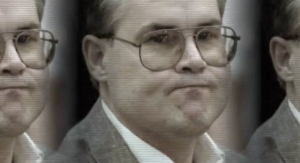
Thomas Dillon
In 1969, while a student at Ohio State University, Thomas Dillon had been investigated for possessing a Russian mortar military weapon.
Authorities did not press charges, citing that the mortar was more of a collector’s item than a weapon.
A second, more recent and illuminating incident had occurred in August 1991. Dillon had been cited by a game warden for illegal target practice near a state hunting area in southern Stark County.
In a search of his pickup truck, the warden seized a .22-caliber pistol with a silencer. Dillon later pleaded guilty to possessing an illegal silencer and was released on bond on condition that he not possess any firearms. He was awaiting final sentencing. The more the task force dug into Dillon’s past, the more likely a suspect he became.
Tailing Thomas Dillon
The task force began tailing Thomas Dillon from the air and on the ground in mid-October 1992. During their surveillance, officers followed Dillon on weekend jaunts of 75 to 125 miles over country roads in Belmont, Harrison, Tuscarawas, Holmes, Coshocton and Carroll counties. Dillon often stopped for beer and would sometimes begin drinking as early as 7:15 a.m.
On November 8, 1992, investigators got to witness an example of Dillon’s vandalism firsthand. He went on a shooting spree, targeting electric meters, oil well pumps and stop signs. Dillon also stopped next to a car with a for-sale sign on it, picked up a large rock and threw it through the windshield.
Task force members lost Thomas Dillon on his way home from Belmont County on November 11, 1992, but later that day, investigators discovered that numerous cows had been killed with a crossbow in Tuscarawas County. Authorities had been informed that Dillon sometimes used a crossbow. Richard Fry helped obtain several of Dillon’s arrows, and they were the same model and style as those recovered from the dead cows.
Authorities followed Dillon to a gun show in New Philadelphia on Nov. 21, 1992, where he bought a .22-caliber rifle. The purchase of the gun was enough to arrest Thomas Dillon for violating his bond on the silencer charge, but there was still nothing to link him to the killings of the outdoorsmen. Investigators faced a tough decision. By waiting to arrest him, they risked losing him and giving him the chance to kill again.
The Arrest of Thomas Dillon
Ohio’s deer season would open November 30, 1992, drawing more than 300,000 hunters into the woods. Authorities decided not to take the gamble. They arrested Thomas Dillon outside a Tuscarawas County convenient store on November 27, 1992, hoping that a search of his home would reveal other damning evidence.
Unfortunately, searches of Dillon’s house, Toyota pickup truck, camper, office and safe deposit box turned up nothing. Five days later, at his bond hearing, prosecutors revealed that Thomas Dillon was the prime suspect in five killings.
The barrage of publicity that followed Dillon’s arrest finally gave the task force the break they needed. On December 4, 1992, a Stark County man came forward and told investigators that he had bought a 6.5 x 55 mm Swedish Mauser rifle from Dillon at a Massillon gun show on April 6. The man turned the rifle and a receipt over to investigators. Ballistic tests matched the bullets recovered from Gary Bradley and Claude Hawkins with the rifle.
On January 22, 1993, a Noble County grand jury indicted Thomas Dillon on two counts of aggravated murder with death penalty specifications, and his bond was set at $1 million. Noble County Prosecutor Lucian Young wanted to seek indictments in all five slayings, but because of publicity about Dillon, he went ahead with two, planning to file other charges at a later date.
Officials at the Stark County jail placed Thomas Dillon on “homicide watch” after two strips of blanket were found in his cell. One of the strips had reportedly been fashioned into a noose. Dillon claimed the strips were used to cover his eyes while he slept. Shortly after that incident, Thomas Dillon told a mental health counselor that “he would strangle inmates if he had the chance and he wouldn’t shed a tear.”
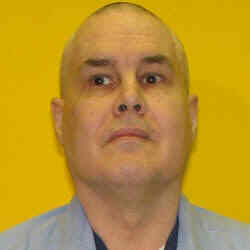
Who Was Thomas Dillon
Thomas Lee Dillon was born in Canton, Ohio, on July 9, 1950. His father succumbed to Hodgkin’s disease and died when Dillon was just 15 months old. Psychologist Jeffrey Smalldon said that Dillon viewed his mother as a cold woman who never praised or punished him. “Dillon has no memories of his mother ever hugging him, kissing him or telling him she loved him,” he said.
Classmates from Glenwood High School in Plain Township remembered Thomas Dillon as extremely intelligent but a loner. His 1968 senior yearbook lists no extracurricular activities.
“Tom was removed from the group,” said classmate Ronald Skelton. “He was a person who marched to the beat of a different drummer, separated from the mainstream.”
Another classmate, Thomas Breit, said that Thomas Dillon was quiet, especially in a group. “I always liked him,” Breit said. “I got a kick out of him. He made me laugh.”
He Loved To Watch Them Suffer
Thomas Dillon loved to hunt. He simply liked to kill and enjoyed watching animals suffer. As a teenager, Dillon began keeping count of the animals he killed on a calendar in the bedroom of his home on 37th Street Northwest in Canton, Ohio. He also kept a separate calendar listing all of the girls he’d had sex with.
Following high school, Thomas Dillon attended Kent State University’s Stark campus and later Ohio State University.
“In the summer months, we would all hang out at Willow Springs swimming pool on 55th Street,” said a man who remembers Dillon. “I just ran around with him a couple years. We all drank together. I never saw him shoot a gun. But I heard other people talking about him ─ ‘Ah, crazy Dillon went out drinking and he was shooting a pistol out the window or he shot the windows out of a school.’ – I heard things like that a couple times.”
Thomas Dillon graduated from Ohio State in 1972 and went to work as a draftsman for the Canton Water Department. In 1978, he married Catherine Elsass, a nurse from Alliance, Ohio.
A Bad Hunter
By the early 1980’s, Thomas Dillon began boasting to friends that the count on his death calendar had reached 500. He had also attended Ohio Peace Officers Training in Lawrence Township in Stark County, where he graduated with expert marksmanship.
In the mid-1980’s, several of Dillon’s neighbors complained to police because Thomas was killing their dogs.
“Thomas Dillon was a bad hunter,” said a man who hunted with Dillon for several years. “He would shoot at farmers’ cats after getting permission to hunt on their land. He just didn’t care. He once boasted of killing a deer caught in high water while crossing a river.
He brought the deer home without field dressing it. He gutted the carcass in his yard and made a mess of it,” the hunter said. “Dillon didn’t seem to understand the concept of friendship. He never offered to do a favor or asked for one. It was always a trade,” he said. “I’ll do this, if you do that. He never talked about women, he never mentioned his wife and love in the same sentence,” he said. “He was always changing guns and carried weapons even when he rode a bike.”
The hunter estimated that Thomas Dillon fired approximately 1,000 rounds a year in target practice. Dillon shot so often that he had permanently damaged his hearing. “He seemed to get a physical thrill out of killing,” the hunter said. “He once used a knife to finish off a wounded groundhog. He was shaking. He was in a frenzy, wild-eyed.”
Thomas Dillon
Dillon’s family members were shocked by his arrest. His mother-in-law, Anne Elsass, a retired high school teacher and guidance counselor, refused to believe that her son-in-law was capable of murder. Dillon “is a witty, kind man who has always had a yen for guns,” she said. Even though she refused to believe initial allegations against him, she told the Akron Beacon Journal, “If they’re true, they’re true.”
Elsass said her daughter Catherine worked as a nurse at Timken Mercy Medical Center in Canton and would rely on her faith in God to get her through the ordeal. “My stomach is churning,” she confided. “I have to keep my spirits up for Cathy. Maybe part of me wants to deny this. Tom was always pleasant. He was always joking. He seemed like a son to me. We’re a very close-knit family,” she said.
On February 9, 1993, 100 spectators gathered outside the Noble County Courthouse as Thomas Dillon, handcuffed and in shackles, was escorted inside. The proceeding was short, and Dillon pleaded not guilty to murder charges in the deaths of Gary Bradley and Claude Hawkins.
A third murder charge was filed against Dillon on May 22, 1993. He was charged with aggravated murder in the death of Jamie Paxton. “This is what we’ve been waiting for the last two and a half years,” said Jean Paxton, “It looks like the end’s in sight.”
Article Continues Below
Article Continues Below
I Want To Kill
Just four days after having been charged with Paxton’s murder, Thomas Dillon was sentenced to three years and ten months in prison, the maximum, on the unrelated federal firearm charges.
Before he could be tried for the three capital murders, Thomas Dillon placed a call from jail to a WTOV television reporter on July 3, 1993, and confessed to the murders. A similar call had also been placed to an Akron Beacon Journal reporter. “I have major problems. I’m crazy. I want to kill. I want to kill,” he said.
The following day, Dillon’s attorneys put together a plea bargain, in which Dillon would confess to all three murders on the guarantee that he would not receive the death penalty, and that no further charges would be brought against him.
Thomas Dillon
On July 12, 1993, Thomas Dillon entered his pleas before Judge John Nau in Noble County Common Pleas Court. He showed no emotion as he answered, “Guilty,” to each charge. Under the plea agreement, Nau sentenced Dillon to life in prison with no chance of parole for 165 years, the maximum sentence.
Jamie Paxton’s mother, Jean, said she was relieved the case was over. “Today is the beginning of the end for Thomas Dillon,” she said. Nonetheless, she was upset that Dillon showed no remorse. “We were given a life sentence the day he decided to kill our son,” she said. “I think he’s a pathetic coward. He’s taken the coward’s way out of everything.”
Noble County Prosecutor Lucien Young III said the plea agreement was the “most practical solution,” even though he preferred a sentence of death. “I kind of felt like he ought to die,” he said. Dillon’s lawyer, Roger Synenberg, countered claims that Thomas Dillon felt no remorse. “He has some regrets about this, but he’s also got to put it all behind him,” he said.
The Final Call
At seven o’clock the next night after the sentencing, the Paxtons’ telephone rang. It was Thomas Dillon. He told Jean Paxton that her “pathetic coward” comment had hurt him. “That’s what you are, Thomas,” she replied. “And if you start with your cocky attitude, I will hang up. I’ve heard enough of that for the past several months. I’m not interested in what you have to say. But there are things I want you to know. Thomas, have you ever heard the expression ‘Tears are the safety valve of the heart’?”
He had not, so she talked about repentance and prayer. “Quit your profanity, stop the loopy simpering in front of the cameras and pick up the Bible before it’s too late,” she said. Paxton continued speaking to him for an hour, finally concluding, “We have spoken long enough. I can’t hate you, but I can never forgive you for what you’ve done to our lives.”
In July 1993, Thomas Dillon admitted to setting 160 fires and committing other acts of vandalism in Eastern Ohio during the preceding five years. Noble County Sheriff Landon Smith estimated that Dillon’s fires caused more than $2 million in damages. The fires were set in Coshocton, Belmont, Guernsey, Carroll, Columbiana and Tuscarawas counties.
Thomas Dillon pleaded with authorities not to be sent to Ohio’s toughest facility, the maximum-security prison in Lucasville in November 1993. “If I go to Lucasville, I’m a dead man,” Dillon said. When news of this comment reached Jean Paxton, she collected 8,000 names on a petition. Thomas Dillon was sent to Lucasville.
Thomas Dillon passed away on October 21, 2011 aged 61 after suffering with an unspecified illness.

source: CrimeLibrary | murderpedia | criminalminds.fandom.com | murdermurdermurder.com | wikipedia
This site contains affiliate links. We may, at no cost to you, receive a commission for purchases made through these links
WickedWe Suggested:

























































